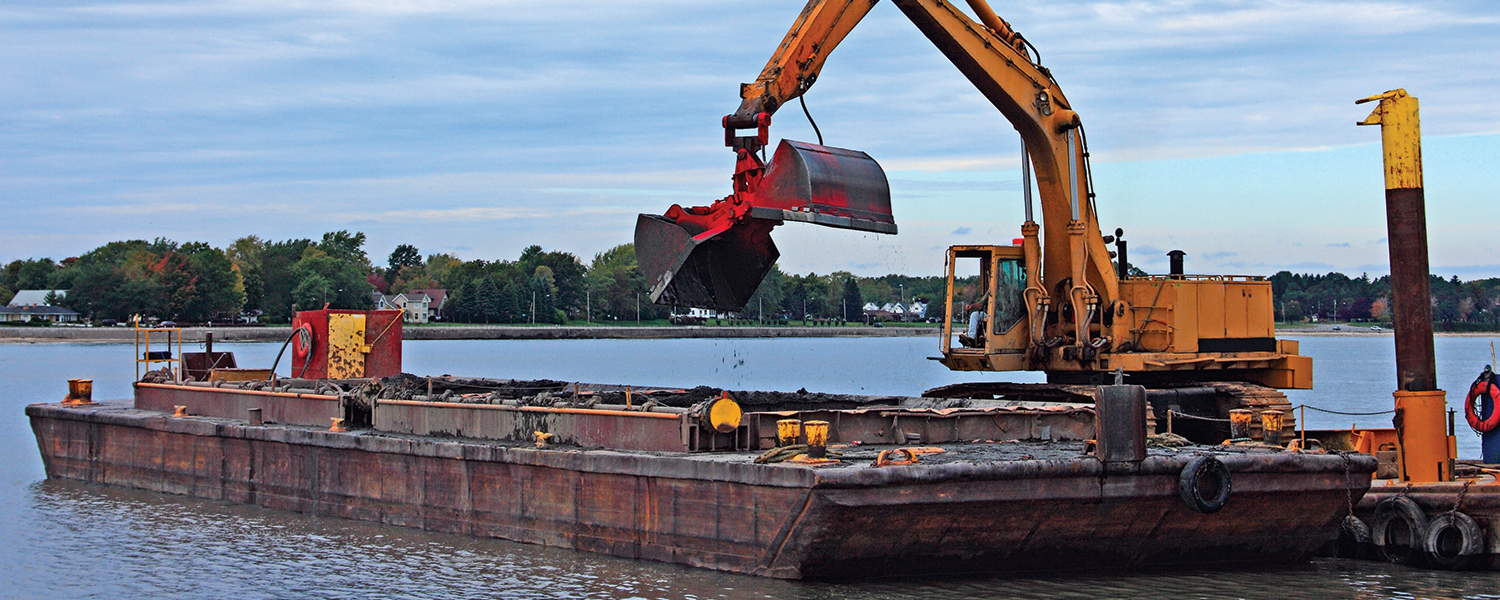Innovative Solutions to Treat Dredged Material From Lake Erie
Open water placement of dredged material in Lake Erie will be banned in the State of Ohio after July 1, 2020. However, eight federal navigation harbors built along Ohio’s Lake Erie coast still need to remove more than 1.5 million cubic yards of sediment.
What to do with this large amount of material removed from the ports in Ohio poses a major challenge. Securing the dredged material in a confined disposal facility (CDF) is costly. An alternative approach is to reuse the dredged material as a construction and landscaping material.
Researchers at Kent State are engaged in multiple projects investigating the reuse of dredged material for construction and engineering purposes. Funded by Ohio Lake Erie Commission, Dr. Rui Liu, Assistant Professor in the College of Architecture and Environmental Design (CAED), and Dr. Reid Coffman, Associate Professor in CAED, developed a lightweight aggregate (LWA) prototype using the dredged material taken from a CDF in Cleveland, and demonstrated its high water retention capacity and stabile physical properties.
The dredged material consists of a mixture of gravel, sand, silt, and clay, which can be used for habitat restoration and development, as well as improving beaches. It also has the potential for use in engineering construction — after dewatering and sieving, as backfill material for highway construction and structures in low-lying areas, as a cover or liner material for sanitary landfills, as a soil-blending material, and as raw material for making bricks and LWA. Based on their success, Liu and Coffman initiated life cycle cost analysis and vegetation studies that are currently underway. Supported by LauchNET at Kent State and Dr. Christopher Groening, associate professor of marketing and entrepreneurship in Kent State’s College of Business Administration, Liu and Coffman will use the findings to support a business model for various potential applications of dredged material in green infrastructure (GI) applications. The applications will match current market trends focusing on GI — e.g., green roofs, bioswales, etc. — which emphasize infiltration and hydrological retention, to provide flexible and affordable solutions to manage storm water and remediate urban brownfields in many industrial Ohio cities.
In a recently completed project, funded by the Ohio Department of Transportation, Dr. Liu, Emily Appelbaum, graduate assistant at CAED, and Dr. Abdul Shakoor, professor emeritus in the Department of Geology, investigated the potential for using LWA made from dredged material in concrete and bridge embankment construction, by evaluating its engineering properties, cost, and environmental sustainability. A LWA made from samples taken from the Harbor of Toledo exhibited excellent potential, with its engineering properties exceeding ASTM and ODOT specifications, a competitive fabrication cost, and lower environmental impacts than the conventional LWA. Students from CAED and other departments also have initiated their research or design projects using the dredged material. Co-advised by Liu, Coffman, and Adil Sharag-Eldin, Associate Professor of Architectural Sciences, Shruti Bhairappanavar — a M.S. candidate in CAED — is investigating an “Ecological Green Wall Built Using Dredged Material-cement Bricks.” Supervised by Professor Diane Davis-Sikora, architecture student Khue Trinh explored the potential of a green roof made from dredged material in her design studio project.
Several students from Landscape Architecture were instructed by Coffman in their Urban Form Studio to explore the urban sedimentation recycling systems. In addition, three groups of senior students from the College of Business Administration, advised by Groening, proposed marketing strategies for the green roof products made from dredged material, advised by Groening.

